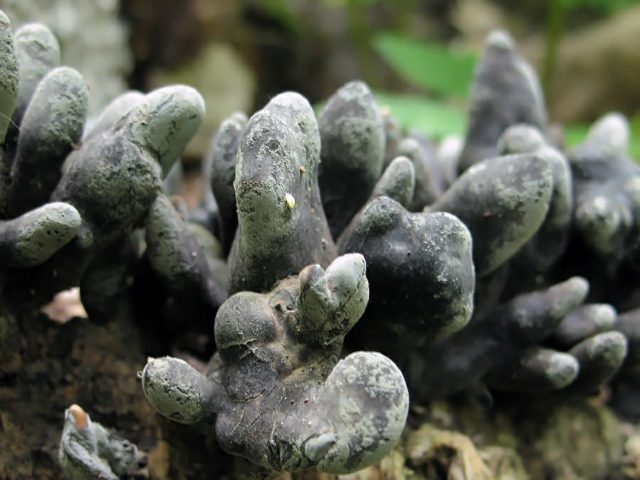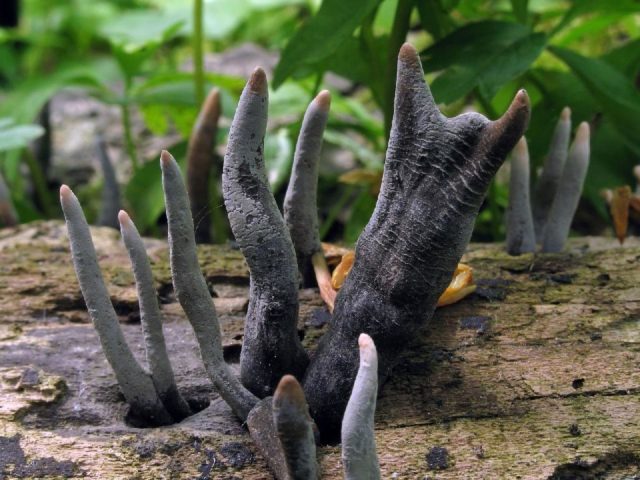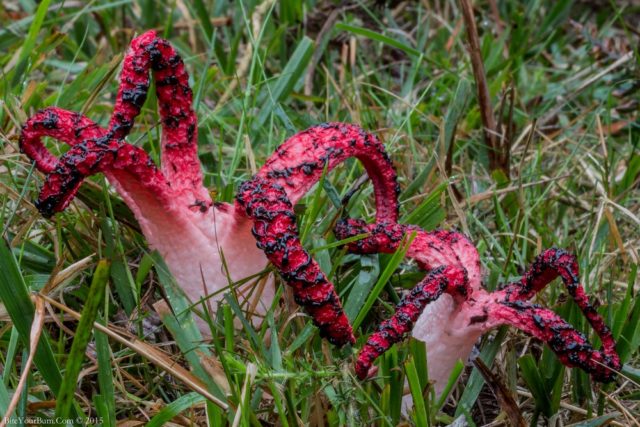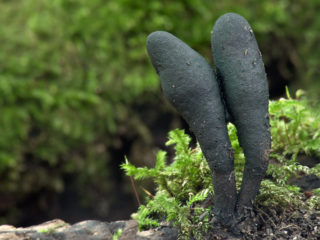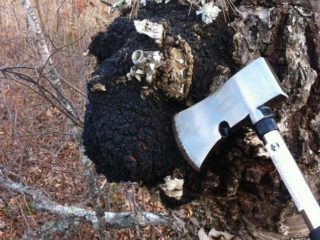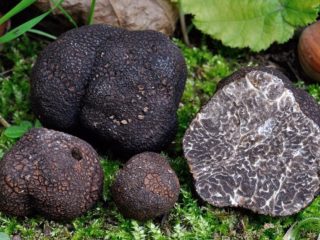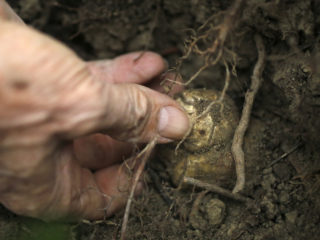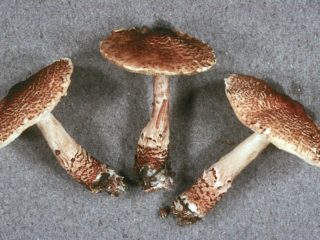Content
Diverse xilaria is characteristic of the forest zone of the temperate climatic zone. Mushrooms belong to the Xilariaceae family. Known universally as "Dead Man's Fingers". In popular science literature, the species is also called: polymorphic xylaria, Xylaria polymorpha, Xylosphaera polymorpha, Hypoxylonpolymorphum.
Other species of the Xilaria genus are also popularly called "dead man's fingers", they are distinguished by microscopic data.
What do xilariae look like?
Although not one species is called "dead man's fingers", all mushrooms are a bit alike - irregular, oval-cylindrical, dark-colored processes sticking out of the ground or stumps. The fruit body of the xilaria is diverse, clavate or finger-shaped, approximately 3 to 9 cm in height, 1-3.5 cm in width. Placed vertically in relation to the substrate. Usually takes on a wide variety of forms - branched or flattened. The apex is slightly rounded and tapered. At the beginning of growth, a dark skin covering the entire fruiting body of the xilaria is diverse, dusty with asexual spores, conidia, therefore, the color is pale bluish or gray-brown. The apex is lighter, almost whitish and shiny.
By summer, the mushroom becomes darker, anthracite, shade. Sometimes the pale top remains, but later it also turns black completely. The surface dries up, becomes more rigid, warty protrusions are formed. Cracks appear at the top of the fruiting body - holes from which ripe spores emerge. From below, to the substrate, the fungus attaches itself with a short, unexpressed leg.
Due to the elongated fruiting bodies, at the beginning of the growth of a grayish color, collected several pieces together, the xilaria mushroom has received the popular name "dead man's fingers". By the end of summer, they become a completely unpresentable dark shade, dry out a little and from a distance become like the excrement of a medium-sized animal.
Under the tough, black spore-bearing skin there is a hard and dense white pulp, radial-fibrous in structure. The pulp is so tough that it is compared to the bark of a tree. The mushroom is cut with difficulty with a knife.
Where diverse xilariae grow
Diverse xilaria is common on all continents. Formations of a tree fungus are found anywhere in the forest zone of Russia. Usually polymorphic xilaria grows in close groups, individual fruiting bodies seem to grow together, up to 10-20 pieces. The species belongs to saprophytes growing on dead wood and feeding on dead wood tissues. Even if the fungus appears to emerge from the soil, its base is in the woody substrate that lies in the ground. Sometimes there are also single fruiting bodies. Most often, "dead man's fingers" are found on the remains of deciduous trees: elm, beech, oak, birch.
But there are also conifers. Sometimes xilaria grows on living trees - in damaged or weakened areas.Fruit bodies are formed from the beginning of spring and stand until frost. Under favorable conditions, they are not destroyed during the winter. More often, the aggregates of xilariae are diverse at the base of a dead tree or on stumps, lying trunks and small dead wood.
Is it possible to eat various xilariae
Fruit bodies are inedible due to the rigid structure and firm consistency of the pulp. The taste of mushrooms is also not very pleasant, without aroma. At the same time, no toxic substances were found in the fruit bodies of a diverse species. The only reason why the mushroom is not eaten is its extreme toughness, the pulp is like wood. Although there is information that the consistency becomes softer and more aromatic after prolonged heat treatment. Other information contradicts the claim, insisting that the smell is very unpleasant.
How to distinguish multiple xilariae
Diverse xilaria is found most often, although there are many different similar species in its genus. With the mushroom, which is most often called "dead man's fingers" in different countries, several others are similar:
- long-legged xilaria;
- a completely different species, Anturus Archer, from the Veselkovy family, which is popularly nicknamed "the fingers of the devil."
Twins are found much less often than a diverse species. In xilaria long-legged fruit bodies are thinner, there are differences in color almost imperceptible to non-specialists. Accurate identification of saprophytes is possible only under a microscope. The species also grows on dead wood. It has been noticed that a group of highly elongated fruiting bodies is often formed on the fallen branches of a sycamore tree.
The Anthurus Archer mushroom is mainly found in Australia and Tasmania, but since the beginning of the twentieth century, it was accidentally introduced to Europe. A hundred years later, it spread to Eastern European territory. It does not at all look like xilariae, since its fruiting bodies are reddish in color. Perhaps the confusion arises only because of such names with a negative emotional connotation.
The medicinal properties of the xilaria multifaceted
Alternative medicine uses a variety of fruiting bodies for several medicinal purposes:
- as a diuretic;
- a substance that increases the amount of milk after childbirth.
Research is being carried out on the effectiveness of compounds of a diverse species that slow down the multiplication of the immunodeficiency virus. The isolated polysaccharide also stops the growth of cancer cells.
Conclusion
Diverse xilaria is most often found as a poorly distinguishable, accrete group of mushroom fruiting bodies, grayish-black in color. The mushroom is inedible only because of the tough pulp, there are no poisonous substances in it. In folk medicine, the pulp is dried and ground into powder for more abundant lactation in nursing mothers. It is also used as a diuretic.
